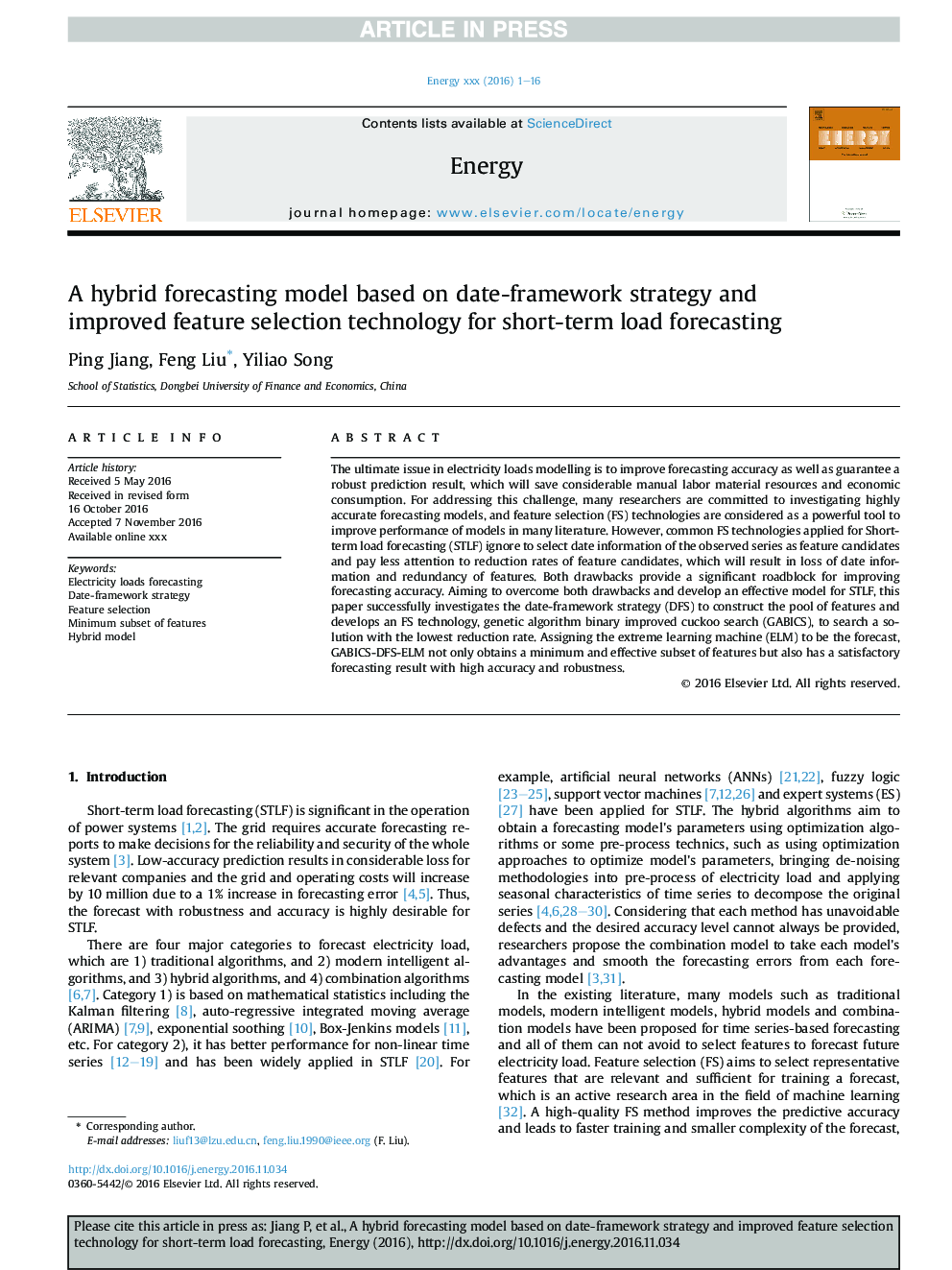| Article ID | Journal | Published Year | Pages | File Type |
|---|---|---|---|---|
| 5476916 | Energy | 2017 | 16 Pages |
Abstract
The ultimate issue in electricity loads modelling is to improve forecasting accuracy as well as guarantee a robust prediction result, which will save considerable manual labor material resources and economic consumption. For addressing this challenge, many researchers are committed to investigating highly accurate forecasting models, and feature selection (FS) technologies are considered as a powerful tool to improve performance of models in many literature. However, common FS technologies applied for Short-term load forecasting (STLF) ignore to select date information of the observed series as feature candidates and pay less attention to reduction rates of feature candidates, which will result in loss of date information and redundancy of features. Both drawbacks provide a significant roadblock for improving forecasting accuracy. Aiming to overcome both drawbacks and develop an effective model for STLF, this paper successfully investigates the date-framework strategy (DFS) to construct the pool of features and develops an FS technology, genetic algorithm binary improved cuckoo search (GABICS), to search a solution with the lowest reduction rate. Assigning the extreme learning machine (ELM) to be the forecast, GABICS-DFS-ELM not only obtains a minimum and effective subset of features but also has a satisfactory forecasting result with high accuracy and robustness.
Keywords
Related Topics
Physical Sciences and Engineering
Energy
Energy (General)
Authors
Ping Jiang, Feng Liu, Yiliao Song,
